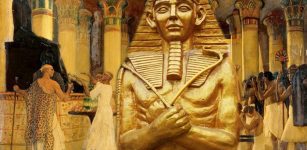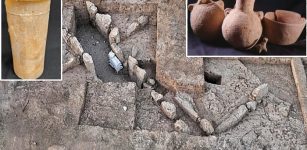Mahabharata Is Much Older Than Previously Thought – Archaeological Discovery Reveals
Conny Waters - AncientPages.com - The Mahabharata, one of the two major Sanskrit epics of ancient India is of great value to anyone interested in Hinduism and ancient history.
The age of the Mahabharata has been debated on several occasions and now scientists announce the Sanskrit epic is much older than previously thought.
Currently, the Mahabharata is dated to 900-1000 B.C., but based on a recent archaeological discovery, scientists say there are reasons to consider the Sanskrit epic could date back to 1500-2000 B.C.
Image source: Ap Herald
While excavating at the site of Sanauli, 68 km away from Delhi, India, archaeologists unearthed a “war chariot” allegedly driven by a horse, a rusted bow and arrow, a burial site and ochre colored pottery, war shields, whip, torch and an antennae sword with hilt.
According to Economic India Business Times, “the director of the ASI’s Institute of Archaeology, Sanjay Manjul, who had carried out the Sanauli excavation. Manjul said the war chariot found at the site was the first discovery of its kind and that after advanced testing it was found to be “a horse-pulled” one, which brings the site “closer to the culture of Mahabharata”.
“The whip we have discovered is specifically the one that is used on a horse, not a bull. The wheels, pole and yoke are solid, with copper triangles. The helmets, shields are sophisticated. The Sanauli findings are a missing link with the Rigvedic culture and a sign of our civilizational continuity. Chariots figure prominently in Rigveda, Ramayana and Mahabharata,” he said.
Manjul reexamined the findings of renowned archaeologist BB Lal, who had previously carried out excavations in the region between 1950 and 1951. The results reveal that around 800 B.C. a heavy flood in the Ganga had destroyed a considerable portion of the settlement. The ancient artifacts he managed to recover offered evidence of the earliest common pottery connecting all the Mahabharata sites such as Hastinapur, Mathura, Kurukshetra and Kampilya.
As Economic India Business Times reports, BB Lal “had also estimated that the battle in Kurukshetra to have taken place around 800 BC and had said that the capital was shifted to Kaushambi from Hastinapur during the time of Nichasku, who was the fifth ruler after Parikshit, who ascended the throne after the war, while Udayana, the contemporary of Buddha, was the 19th in the Kuru clan.
According to Lal’s research, Udayana would have ruled around 500 BCE, after which there were 24 rulers who ruled for 15 years each.
It is with these calculations that Lal had bracketed the period of the Mahabharata around 900 BC.
“The OCP/copper hoard culture of 2600-1700 BC is known for its urban culture, advanced weapons, daggers, shields, copper, chariots, metal pots, and similarity with vedic rituals which had more similarity with the Mahabharata as we know. We have had evidence of this in some places associated with the Mahabharata including Meerut. But the existing dates are based on the PGW culture which had rural settlements, no chariots, limited pottery and few rituals. These don’t corroborate with the literature evidence of the Mahabharata too,” he said.
See also:
India’s Tradition Of Advanced Metallurgy, Craftsmen And Blacksmiths Is Longer Than Thought
Ancient Indian Sages Had Highly Advanced Scientific Knowledge Thousands Of Years Ago
Ancient Stepwells Of India: Symbol Of Sacred Water And Boundary Between Heaven And Earth
Manjul has also looked into the genealogy of the Kuru kings, starting from Pratipa leading to Dhiritrashtra, Pandu and Yudhisthir in the fifth, sixth, seventh ranks, and ending with the 36th king Kshemaka, who is preceded by Iramitra.
“The contemporary of Buddha was around 550 BCE which was the 23rd generation of the Kuru kings. If, on average, you give 50 years each to the kings, which reduces in the later generations with frequent wars, the dating of the Mahabharata is around 1750 BCE,” he said.
See also: More Archaeology News
While the genetic sequencing of the Sanauli findings is underway, Manjul said the ASI team has used several scientific techniques such as X-Ray, CT Scan, 3D scanning, photogrammetry and GPR survey to be sure of its accuracy. Since the first excavations at Indraprastha in early 1950s, there have been at least eight excavations at places mentioned in the Mahabharata, but the ASI now has not published any conclusive, direct or genetic evidence so far to establish historical facts.”
Of course, many will now argue and say the Mahabharata is older than this, but that has not yet been officially confirmed.
Written by Conny Waters - AncientPages.com Staff Writer





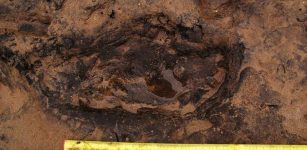

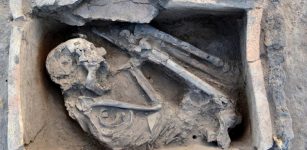

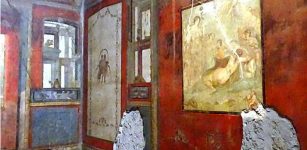
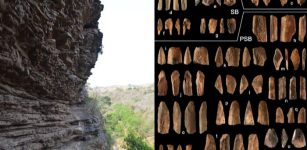
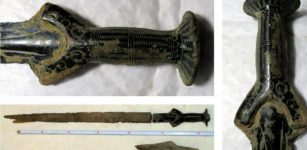
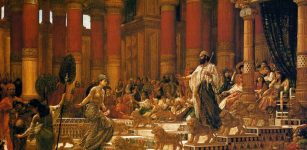
![Photo taken on Dec 20, 2015 shows hoof-shaped gold ware unearthed from the main coffin in the Haihunhou (Marquis of Haihun) cemetery, East China's Jiangxi province. [Photo/Xinhua]](https://www.ancientpages.com/wp-content/uploads/2015/12/MarquisofHaihuntomb1-307x150.jpg)

